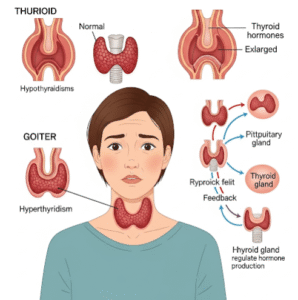Overview
Viral haemorrhagic fevers (VHFs) are a group of severe illnesses caused by several distinct families of viruses. These infections affect multiple organ systems and damage the blood vessels, leading to bleeding (haemorrhage), shock, and sometimes death. VHFs are often associated with outbreaks in tropical and subtropical regions but can pose global health threats. South Korea provides advanced diagnostic and treatment options to manage and contain these diseases effectively.
What is Viral Haemorrhagic Fever?
Viral haemorrhagic fever is caused by viruses that target the vascular system and impair the body’s ability to regulate blood clotting, resulting in bleeding and organ dysfunction. VHFs include diseases like Ebola, Marburg, Lassa fever, Crimean-Congo haemorrhagic fever, and Dengue hemorrhagic fever. These viruses are typically transmitted via arthropod vectors (like ticks and mosquitoes) or contact with infected animals or bodily fluids.
Symptoms
- Sudden onset of fever
- Fatigue and weakness
- Muscle aches and joint pain
- Dizziness and headache
- Abdominal pain and nausea
- Vomiting and diarrhea
- Bleeding under the skin, from gums, or in vomit or stool
- Low blood pressure and shock in severe cases
Causes
- Infection with RNA viruses from families such as Arenaviridae, Filoviridae, Bunyaviridae, and Flaviviridae
- Transmission through bites of infected mosquitoes or ticks
- Contact with infected animals (rodents, primates) or contaminated bodily fluids
- Human-to-human transmission through direct contact with blood or secretions
Risk Factors
- Living or traveling in endemic tropical or subtropical regions
- Exposure to vectors like mosquitoes, ticks, or rodents
- Healthcare workers or laboratory personnel handling infected samples
- Close contact with infected persons or animals
- Poor sanitation and crowded living conditions
Complications
- Severe bleeding and hemorrhage
- Multi-organ failure (kidneys, liver, lungs)
- Shock and death if untreated
- Secondary infections due to weakened immunity
- Long-term organ damage in survivors
Prevention
- Avoid exposure to vectors by using insect repellents, bed nets, and protective clothing
- Practice safe food and water hygiene
- Avoid contact with infected animals and their bodily fluids
- Use protective equipment when caring for infected patients
- Implement vector control programs in endemic areas
- Vaccination where available (e.g., yellow fever)
Treatment Options in Korea
South Korea provides specialized care for viral haemorrhagic fevers focusing on supportive management and infection control:
- Isolation and infection control – Strict protocols to prevent spread within healthcare settings
- Supportive care – Fluid replacement, blood transfusions, and oxygen therapy as needed
- Antiviral drugs – Limited availability but used in some VHFs (e.g., ribavirin for Lassa fever)
- Advanced diagnostics – PCR testing, serology, and viral cultures for rapid identification
- Critical care – Intensive monitoring and organ support in severe cases
- Research and surveillance – Active monitoring of outbreaks and vaccine development programs
- Public health education – Awareness campaigns on prevention and early recognition













